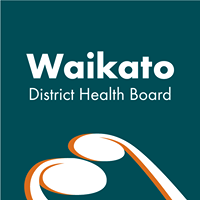Media Release
Date: 26 November 2014
Beams, Mats And Socks Prevent Falls in Hospital
Modern technology is keeping Te Awamutu resident Audrey Evans safe from falling during her stay in Waikato Hospital.
Like every patient, the 81-year-old had an assessment when she came into charge nurse manager Hayley Colmore-Willliams’ ward in the Older Persons and Rehabilitation Building.
Using the HenrichII fall risk model, Mrs Evans was assessed as a high risk of falling.
So out comes the fall prevention toolbox and all the tools to keep her safe from falling put in place. Among the tools is an INSvisi beam which sets off an alarm when a patient gets out of bed. Staff can see what room the beam has gone off in.
Other tools in the box include:
•
Signage in the patient room to remind patients, family and
staff of high fall risks.
• Orange non-slip
socks that prevent the patient falling and as also an alert
to anyone on the ward that this patient is at high risk of
falling if the patient is mobilising and that they should
not be mobilising independently Non-slip socks are one of
the original tools introduced back in 2010, after clinical
product trials
• Ultra Low bed – to reduce
fall height, and impact
• Impact or crash mats
beside Ultra Low bed
• Long reach call bell –
in reach for the patient
• Patient and family
education
• A ‘transfer belt’ to assist
with mobility
• And sensor mats on the bed,
seating and/or floor if not using the INSvisi beam.
Surrounded by these tools, Mrs Evans really feels like
she is being looked after.
“It’s marvelous what they have these days.
“The staff have been wonderful to me
and I feel safe.”
Falls with or without injury carry a
heavy quality of life impact in addition to the pain and
suffering and the high cost of rehabilitation. There is also
the added fear of falling again, which often limits people
to engage in social activities. This can lead on to further
physical decline, depression, social isolation and feelings
of helplessness.
Waikato DHB will continue with the ongoing purchase and implementation of ‘tools’ as they are part of the plan that has helped reduce falls by 41 per cent in the past four years.
Fall prevention is one of the DHB’s main Patient Safety priorities and the approach being it’s everyone’s responsibility in the organisation to know about falls prevention. That extends to the patient and their family. The DHB actively engages with service users and families to raise awareness of the importance of fall prevention in the home an everyday life. The 3 Ps of fall prevention Predict, Protect and Prevent
Read all about it in Waikato DHBs annual quality report released today (26 November) looking back on the previous year’s progress and looking forward, setting new areas of work.
ENDS



 NZEI Te Riu Roa: Mandated Single Approach To Reading Will Not Work
NZEI Te Riu Roa: Mandated Single Approach To Reading Will Not Work The Conversation: Could The School Phone Ban Work?
The Conversation: Could The School Phone Ban Work? Public Health Communication Centre: To Avoid A Measles Epidemic, Aotearoa Must Close The ‘Immunity Gap’
Public Health Communication Centre: To Avoid A Measles Epidemic, Aotearoa Must Close The ‘Immunity Gap’ Heritage New Zealand: Kid-friendly Archaeology Resource Kit Launched As Part Of Archaeology Week
Heritage New Zealand: Kid-friendly Archaeology Resource Kit Launched As Part Of Archaeology Week Tatai Aho Rau Core Education: Cyber Skills Programme For Tamariki Recognised At Māori Language Awards
Tatai Aho Rau Core Education: Cyber Skills Programme For Tamariki Recognised At Māori Language Awards Waitaha Kapa Haka: Waitaha-South Island Kapa Haka Celebrates 60th Anniversary
Waitaha Kapa Haka: Waitaha-South Island Kapa Haka Celebrates 60th Anniversary